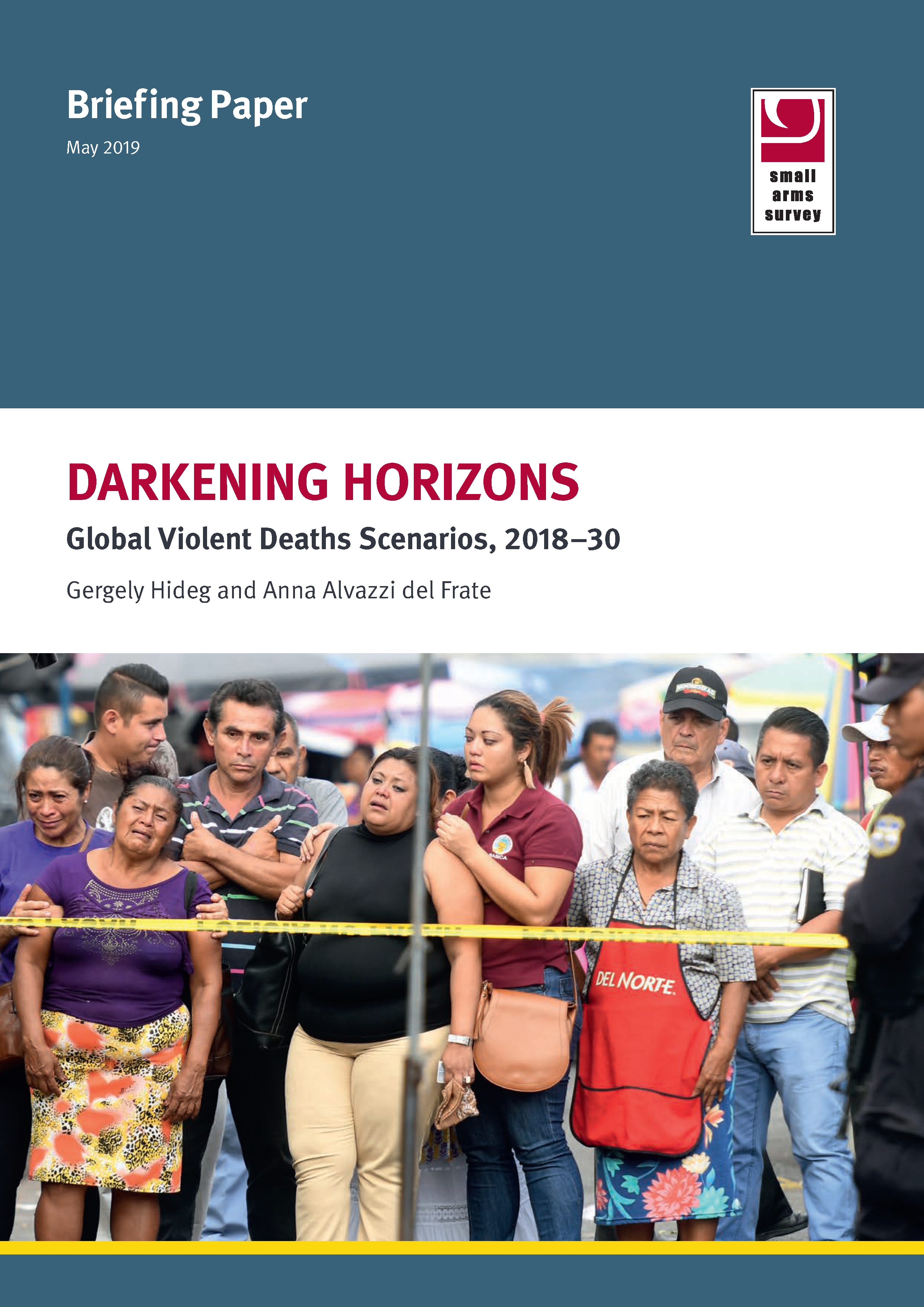
Darkening Horizons: Global Violent Deaths Scenarios, 2018–30
The year 2017 saw the second highest annual rate of global violent deaths in the period 2004–17, according to this Briefing Paper from the Small Arms Survey.
In 2017, 589,000 people—including 96,000 women and girls—lost their lives due to lethal violence. This corresponds to a rate of 7.80 violent deaths per 100,000 population, the second highest since 2004. The same figure for 2016 was 560,000 people, or 7.56 deaths per 100,000 population. The data for 2017 compared to 2016 was also the third-largest annual change during the period 2004–17. Overall, the proportion of female victims of lethal violence remained stable at 16%.
This increase in the number of global violent deaths is primarily due to a rise in homicides, ie: non-conflict deaths.
‘In 2017, some 403,000 people were victims of intentional homicides, compared to 106,000 who were killed as a result of war or other conflicts,’ noted Gergely Hideg, co-author of the Small Arms Survey Briefing Paper Darkening Horizons: Global Violent Deaths Scenarios, 2018—30.
Central America and South America saw especially noticeable increases in homicide rates. Most of the increases in South America were recorded in Venezuela and Brazil, while in Central America, Mexico registered a record number of homicides. In these regions, the predominant proportion of victims of violence are men, so while the global absolute number of women killed in 2017 is higher than those killed in 2016, the proportion of female to male victims remained the same.
‘Taking into consideration existing efforts to tackle a long-term trend in violent deaths in Central and South America, the increase in homicide rates is especially significant,’ said Dr Anna Alvazzi del Frate, co-author of the Briefing Paper.
‘Policies to prevent and reduce violence are often short term and may fail for a variety of reasons, including political instability. A reduction of violent deaths may be achieved on the basis of long-term, broad policies supported by political will. Accurate data—disaggregated by sex, context, and instrument—is indispensable to support and monitor impacts of such policies,’ she continued.
Given commitments under the global 2030 Agenda for Sustainable Development (notably Sustainable Development Goal Target 16.1 on significantly reducing all forms of violence and related death rates), the data indicates the need for extra efforts to reverse the trend and achieve a significant reduction of lethal violence. In this data, the Small Arms Survey identifies three different, but plausible, scenarios reflecting global violent deaths trends in the period 2018–30: 1) ‘business-as-usual’, where international efforts continue as at present; 2) a positive scenario with concerted efforts that lead to a reduction in lethal violence; and 3) a negative scenario, where inaction causes even further increases in violent deaths.
‘In light of the significant rise in trends for 2017, the ‘business-as-usual’ scenario would result in approximately 660,000 violent deaths in the year 2030. However, if states were to truly commit; if they were to take immediate action and replicate the results of those who have been most successful at preventing and controlling lethal violence, 1.45 million lives could be saved between now and 2030—half of which would be in South and Central America and the Caribbean,’ Dr Alvazzi del Frate concluded.
Authored by Gergely Hideg and Anna Alvazzi del Frate, Darkening Horizons: Global Violent Deaths Scenarios, 2018—30, formed part of the Small Arms Survey's Gender Lens for Arms Control Support and Sustainability (GLASS) project and was made possible through the financial support of the Government of Canada.
Available in: ENGLISH
- To learn more, see our Global Violent Deaths (GVD) database